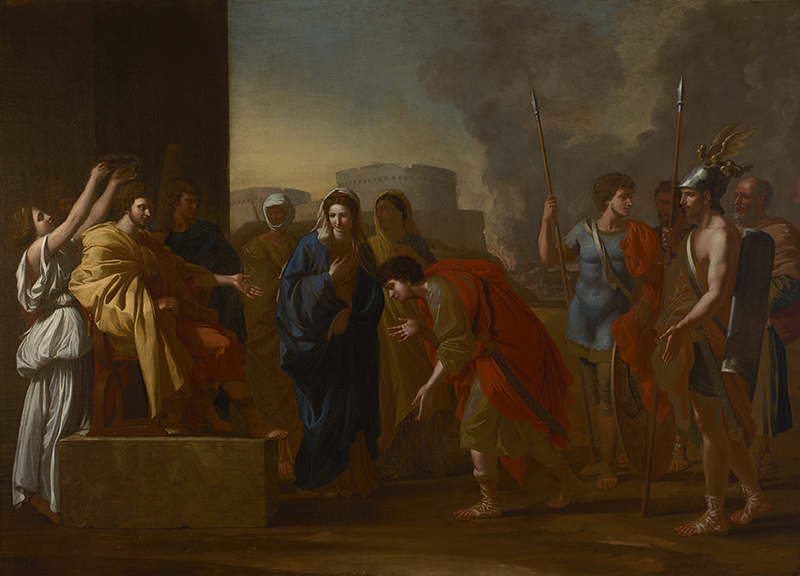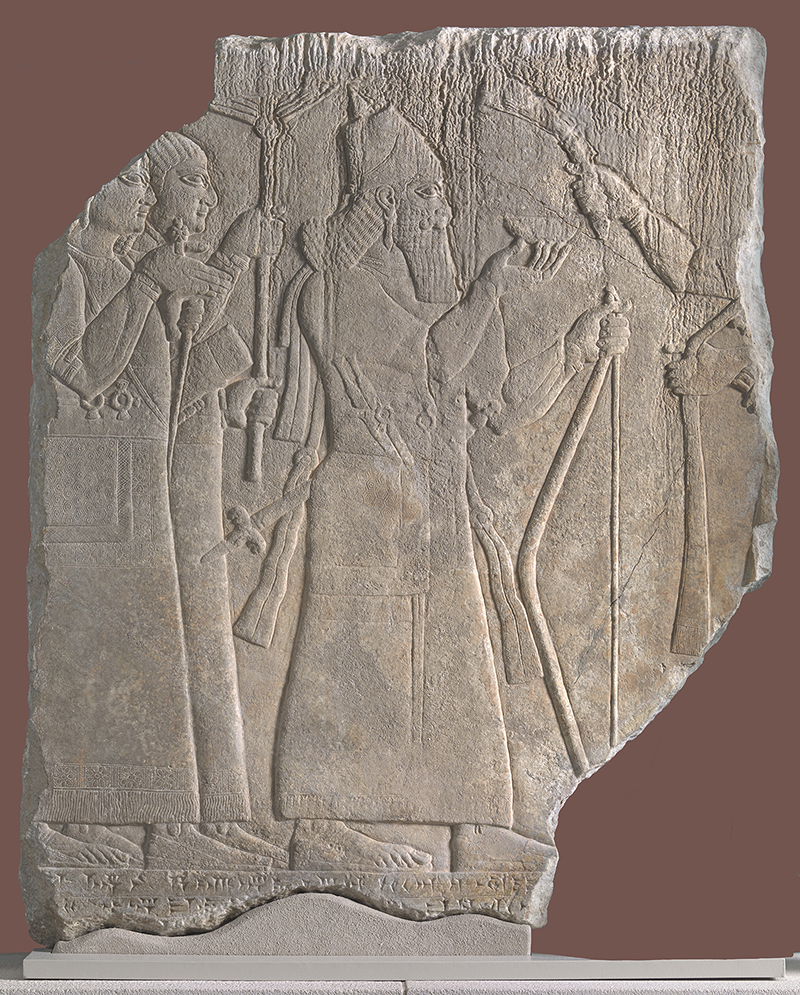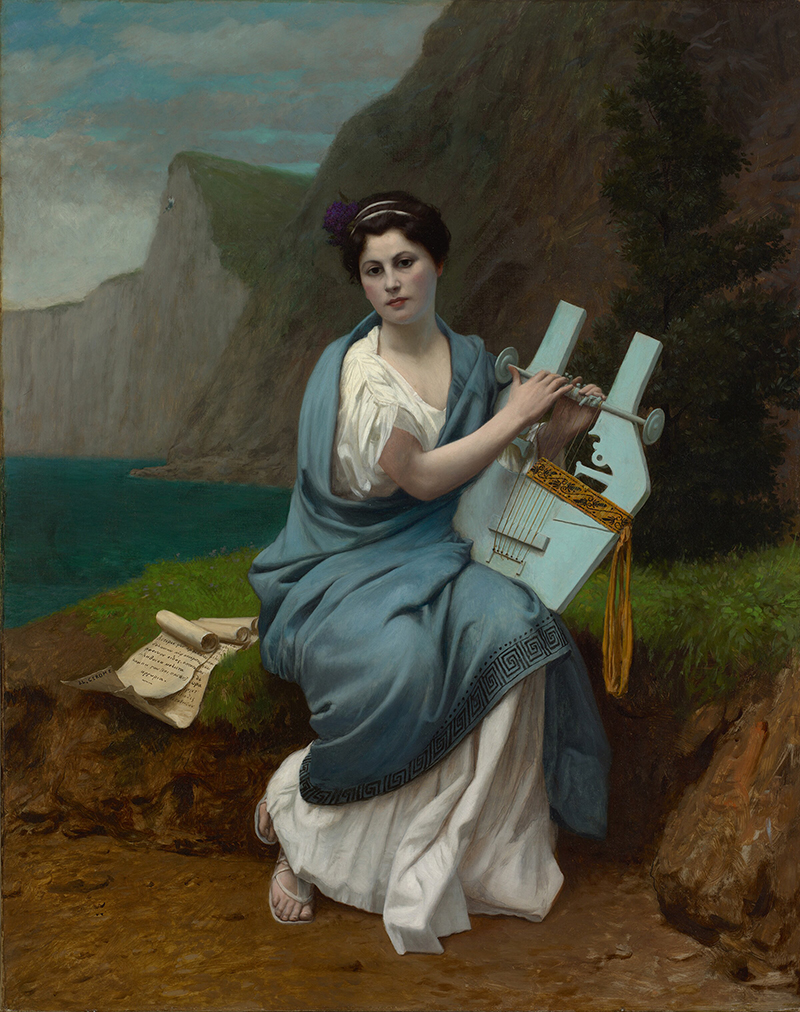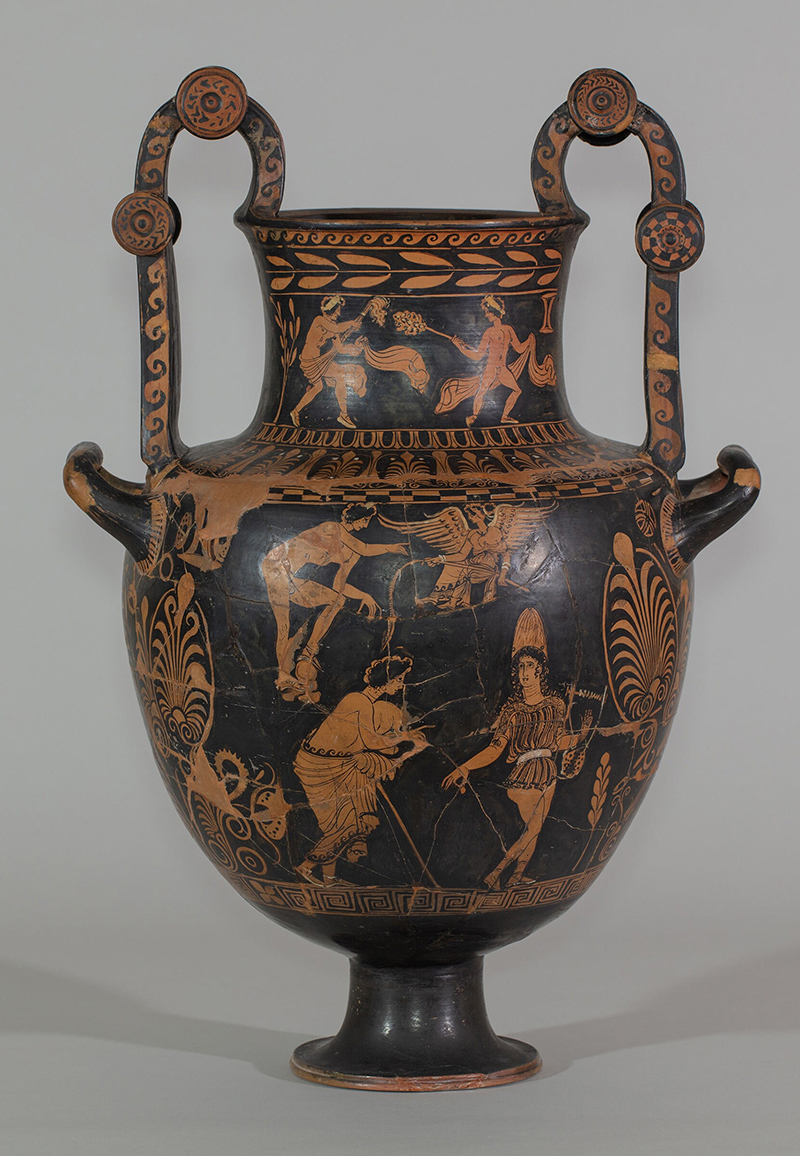"Antiquity & America" opens
By Bowdoin College Museum of Art
The Continence of Scipio, ca. 1726, oil on canvas, by John Smibert, American, 1688–1751. Bequest of the Honorable James Bowdoin III. Bowdoin College Museum of Art. 1813.10
On March 31st, a new exhibition Antiquity & America: The Ancient Mediterranean in the United States opens at the Bowdoin College Museum of Art. The exhibition weaves together highlights of the Museum’s collection of antiquities with masterworks of American art to explore the enduring imprint of the ancient world on the United States. Histories of ancient artifacts, stories of American collectors, and American artworks frame a wide-ranging story that reaches deep into the heart and history of the United States, revealing how antiquity has shaped our search for a national identity and our place in history at pivotal moments of national birth and rebirth.
Antiquity & America opens with a tour of the exhibition on the evening of March 31st at 7:00 pm. Join members of the curatorial team for insights into the rich history of the collections, and the deep roots of antiquity in American history and society.
Programming continues on Monday, April 11th at 7:00 pm in Kresge Auditorium when Matthew Bogdanos P’25, Marine Colonel and Manhattan Assistant District Attorney, will deliver speak about antiquities trafficking and his team’s role in recovering thousands of looted antiquities. On Saturday, April 30th, Bowdoin’s Masque & Gown club will perform an ancient Greek play on the steps of the Museum. All events are free and open to the public.
The exhibition explores antiquities, American collectors, and American artists across three periods of United States history. During the late Colonial and early American periods (ca. 1750–1812), authentic antiquities were few and far between in the United States, and Americans encountered antiquity first and foremost through reproductions in prints, plasters, and paintings. Friendships were forged between collectors like James Bowdoin III and Thomas Jefferson over their shared pursuit of artworks that combined their passions for the arts and for antiquity
 Between the war of 1812 and the Civil War, when the United States took its first tentative steps on the world stage, antiquities began arriving in America through the efforts of American diplomats, missionaries, and military men. Among them were the Assyrian reliefs sent to Bowdoin College by Henri Byron Haskell, Medical School Class of 1855. American artists undertook the Atlantic voyage to train in Europe and returned home stimulated by the ancient ruins and statuary they encountered abroad. The ancient world became a rich source of inspiration and of subject matter for American artists like Hiram Powers, Horatio Greenough, and Thomas Cole, whose works are featured in Antiquity & America.
Between the war of 1812 and the Civil War, when the United States took its first tentative steps on the world stage, antiquities began arriving in America through the efforts of American diplomats, missionaries, and military men. Among them were the Assyrian reliefs sent to Bowdoin College by Henri Byron Haskell, Medical School Class of 1855. American artists undertook the Atlantic voyage to train in Europe and returned home stimulated by the ancient ruins and statuary they encountered abroad. The ancient world became a rich source of inspiration and of subject matter for American artists like Hiram Powers, Horatio Greenough, and Thomas Cole, whose works are featured in Antiquity & America.
 Lastly, American prosperity and technological advances of the Gilded Age ushered in a new era of American encounters with the ancient world at home and abroad—through the formation of major private and public antiquities collections and through increased tourism and travel. Americans like Carolyn Sanders Truax of New York continued to see themselves and the nation through the lens of the ancient world, and connections between past and present (sometimes quite directly) in the art and literature of the period. During the Gilded Age, the growing collections of art at the College were given a new, neoclassical home in the Walker Art Building, completed in 1894, and the collection of antiquities grew exponentially because of the generosity of patrons like Mary Sophia and Harriet Sarah Walker, George Warren Hammond, Dana C. Estes, and Edward Perry Warren.
Lastly, American prosperity and technological advances of the Gilded Age ushered in a new era of American encounters with the ancient world at home and abroad—through the formation of major private and public antiquities collections and through increased tourism and travel. Americans like Carolyn Sanders Truax of New York continued to see themselves and the nation through the lens of the ancient world, and connections between past and present (sometimes quite directly) in the art and literature of the period. During the Gilded Age, the growing collections of art at the College were given a new, neoclassical home in the Walker Art Building, completed in 1894, and the collection of antiquities grew exponentially because of the generosity of patrons like Mary Sophia and Harriet Sarah Walker, George Warren Hammond, Dana C. Estes, and Edward Perry Warren.
 Today the Bowdoin College Museum of Art’s collection of nearly two thousand antiquities spans the ancient world from Italy to Iraq and chronicles some four thousand years of human history and culture. The collection ranks among the most prominent collegiate and regional collections and neatly parallels the broader phenomenon of American interest in antiquity and its arts, serving as a remarkable bellwether for the evolving taste and motivation behind American collecting of antiquities. Antiquity & America highlights more than one hundred of Bowdoin’s most remarkable examples of art from across the ancient world, from the civilizations of the Egyptians, Assyrians, Greeks, and Romans and encompassing marble and bronze sculpture and figurines, Greek painted vases, Roman glass, numismatics, and many other categories of ancient art and artifacts.
Today the Bowdoin College Museum of Art’s collection of nearly two thousand antiquities spans the ancient world from Italy to Iraq and chronicles some four thousand years of human history and culture. The collection ranks among the most prominent collegiate and regional collections and neatly parallels the broader phenomenon of American interest in antiquity and its arts, serving as a remarkable bellwether for the evolving taste and motivation behind American collecting of antiquities. Antiquity & America highlights more than one hundred of Bowdoin’s most remarkable examples of art from across the ancient world, from the civilizations of the Egyptians, Assyrians, Greeks, and Romans and encompassing marble and bronze sculpture and figurines, Greek painted vases, Roman glass, numismatics, and many other categories of ancient art and artifacts.
Sean P. Burrus
Interim Curator and Andrew W. Mellon Post-Doctoral Curatorial Fellow
Illustrations:
Relief panel with King Ashurnasirpal II and attendants celebrating a hunt, Mesopotamian, Neo-Assyrian, Nimrud (ancient Kalhu), Iraq, ca. 883–859 BCE, Northwest Palace, West Wing, panel 16, gypsum alabaster. Gift of Dr. Henri Byron Haskell, Medical School Class of 1855. Bowdoin College Museum of Art. 1860.5
Red-figure Nestoris, 19th century, terracotta by the Primato Painter. Gift of the Misses Harriet Sarah and Mary Sophia Walker. Bowdoin College Museum of Art. 1893.1
Portrait of Mrs. Charles H. Truax as Sappho, 1899, oil on linen, by Jean-Léon Gérôme, French, 1824–1904. Gift of Carolyn Aldrich Frost (Mrs. Truax' granddaughter), and Hunter S. Frost, Class of 1947. Bowdoin College Museum of Art. 2000.10